14 Paper STEM Activities!
Looking for last-minute STEM ideas for the end of the year, for after testing, for a classroom warmup, or for a rainy day at home? Try these paper-based STEM activities!
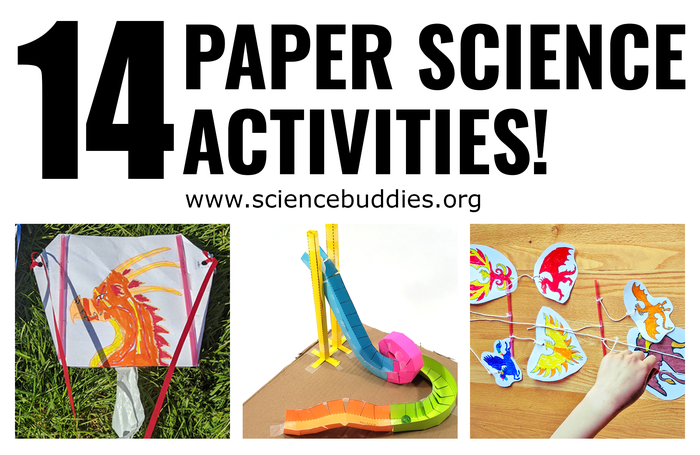
Science Activities that Use Paper!
Doing science and engineering activities doesn't have to require lots of materials. If you are looking for something to do with students in the classroom or with kids at home, an engaging STEM learning experience might be just a stack of paper away!
14 Free STEM Experiments Kids Can Do with Paper
1. Paper Pinwheels
Find the Best Pinwheel Design: Explore different models of paper pinwheels to see how they each spin in wind. Which design works best?
2. Paper Roller Coasters
Build a Paper Roller Coaster: Design and build model roller coasters from paper. Kids will find that potential energy, kinetic energy, and friction all play a role in designing a roller coaster that a marble can successfully run from start to finish. What's the secret to adding loops? A convenient science kit (or classroom kit) is available for this activity. (Educators! Free NGSS-aligned lesson plan offers additional support.)
3. Paper Kites
How Tails Help a Kite to Fly: Kites are excellent for paper-based science. Kids can experiment to see what shapes, materials, and designs make kites fly best. (Kites for all ages! This family found making kites to be an engaging STEM learning experience for younger and older kids at home.)
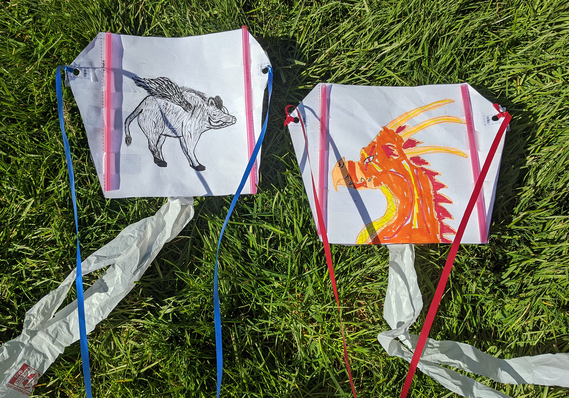
4. Paper Helicopters
Make a Whirlybird from Paper: These simple paper devices let kids explore how helicopters work on Earth or how they might work on Mars. (More Mars science! Whirlybird STEM is part of our Space Science & Mars STEM Lessons and Activities collection. An NGSS-aligned Engineer Helicopters for Mars lesson plan is also available.)
5. Phonebook (or Notepad!) Friction
Phone Book Friction: If you interleave the pages of two phonebooks, it can be incredibly difficult to pull them apart. With a couple of sticky notepads, kids can do a scaled version of this activity and test their strength against the force of friction.
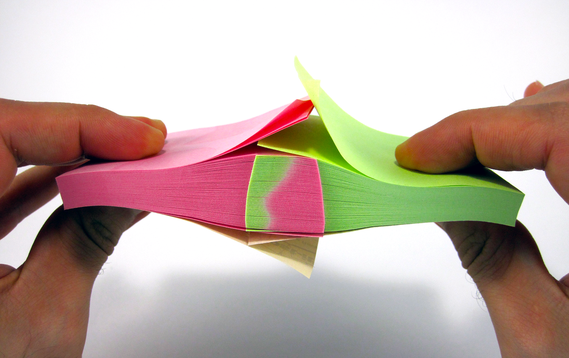
6. Flipbook Animation
Apparent Motion in Flipbooks: Use a stack of index cards (or sturdy paper) to illustrate simple stories that look like they are in motion when you "flip" through them. This is a fun way to tell a story and a fascinating way to explore the connection between flat images and how our brains perceive what we see. (Tip! Try taking a phone video to see if you can capture the animation. How is the flipbook process related to what happens in stop-motion movie making?)
7. Shadow Puppet Show
Making Shadow Puppets: Make a set of shadow puppets from cardstock and use them with a flashlight to put on a shadow play and learn about the physics of light and shadow at the same time! (Educators! This exploration is part of our Physics of Light collection. An NGSS-aligned elementary school lesson plan is also available.)
8. Balance an Art Mobile
Balance the Forces Within a Mobile: Kids can use paper in a variety of ways to make elements to hang from an art mobile. Whether they paint, color, draw, or something else, they'll be learning about forces as they balance their cutouts on straws. (Be inspired! The photo shown below is from the mobile of fantastic creatures this student made at home.)
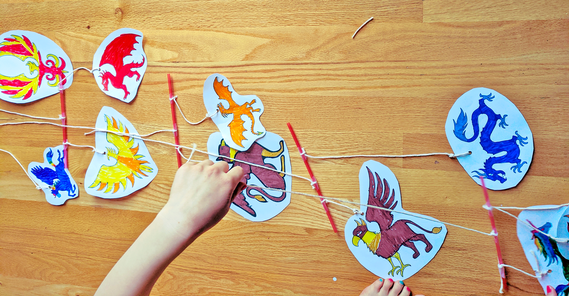
9. Paper Fish
Make a Paper Fish Swim with Surface Tension: Use simple paper fish and dish soap for a speedy demonstration of the power of surface tension!
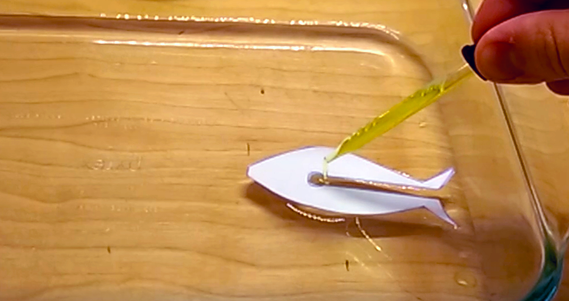
10. Paper Rockets
Build a Paper Rocket: These simple rockets are easy to make with paper and tape and get launched by blowing through a straw. What design or material changes make them fly highest or farthest? (Educators! The Paper Rockets to Learn the Scientific Method is a great way to introduce students to the scientific method.)
11. Paper Towers
Tallest Paper Tower Challenge: Use paper and tape to build tall paper towers. How tall can they be and still stand? What happens if you add weight to the top? This was the 2021 Engineering Challenge project. Kids can still build their own tall paper towers and see how tall they can go! If doing this for fun, you may choose to ignore the limits on sheets of paper. (Educators! Lesson plans are available for grades 3-5, 6-8, and 9-12.)
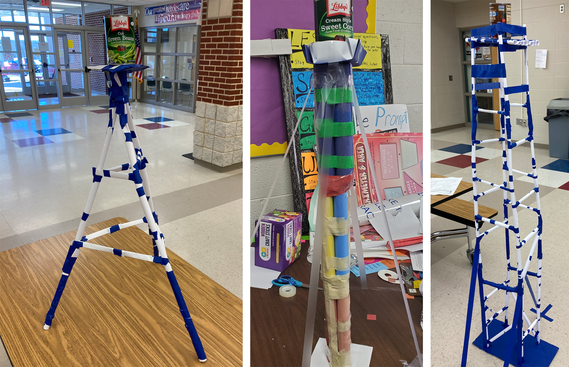
12. Paper Ball Run
Paper Ball Run Challenge: Use paper and tape to build a paper ball run for a ping pong ball. A cross between a roller coaster and a marble run, the paper ball run invites a wide range of approaches to the shape, size, and design. Can you find ways to "slow down" the path of the ball so that it takes as long as possible to get from start to finish? This was the 2022 Engineering Challenge project. The official challenge is over, but kids can still design and build paper ball runs both to explore the construction and to experiment with using science-based strategies to slow the roll. If doing this for fun, you may choose to ignore the limits on sheets of paper. (Educators! Lesson plans are available for grades 3-5, 6-8, and 9-12.
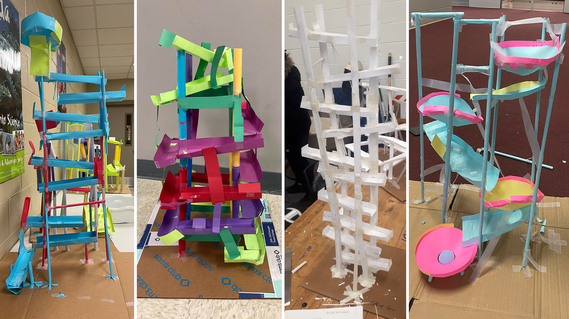
13. Ping Pong Pickup
Ping Pong Pickup Challenge: Use paper and tape to design and build a "paper grabber" tool that can pick something up from a distance. This was the 2023 Engineering Challenge, and students were challenged to pick up and return a ping pong ball. For an informal STEM project, the object to be picked up could be changed. Grabbers, claws, and other kinds of extension devices are used by people every day for a variety of reasons. With paper and tape, students can explore the process of designing a device that can help with specific types of "grabbing" tasks. What shape will they use for the head of the device? How will it "grab" the object? How far can it reach? (Educators! Lesson plans are available for grades 3-5, 6-8, and 9-12.)
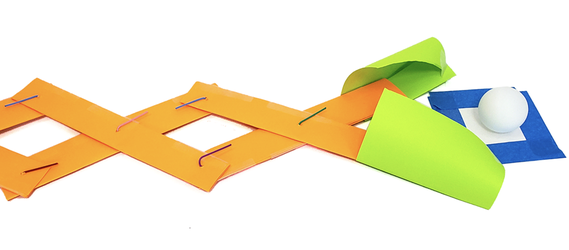
14. Origami Gripper
Make an Origami Robotic Gripper: Make a three-dimensional robotic gripper from a single flat sheet of paper. (Educators! Lesson plan available!)
Paper STEM + Specialty Materials
The following experiment is paper-based but also uses specialty materials.
15. Paper Speaker
Build a Paper Speaker: Use paper, a coil of wire, and neodymium magnets to explore the science of sound and create a working speaker that can be used with an audio or mobile device. Students can extend this exploration with the Measure the Frequency Response of a Paper Speaker independent science project. A convenient science kit is available.
Related Resources
For other STEM activities that use simple, everyday materials, see:
Categories:
You Might Also Enjoy These Related Posts:
- Teach Genetics and Heredity with Free STEM Lessons & Activities - Genetics Science Projects
- Star Wars Projects for May the 4th Be With You Science
- 25+ Earth Day Science Experiments and Activities
- Arduino Science Projects and Physical Computing
- Spring Science Projects: 26 Science Experiments for Spring
- 25+ Robotics Projects, Lessons, and Activities
- March Madness Basketball Science Projects: Sports Science Experiments
- 15 Density Science Experiments



















